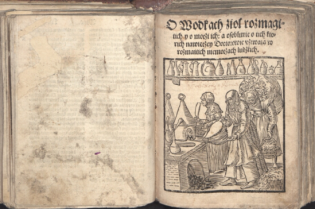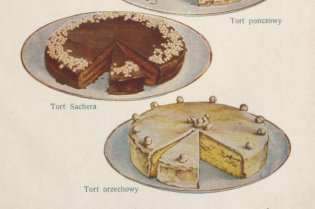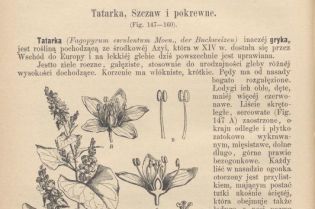Gęsi pipek, challah and bagels - Jewish influences in Krakow
Different styles of Jewish cuisine are always a compromise between the principles of the kosher diet as outlined by Judaism and the local culinary traditions of places where Jews lived. It was no different in Krakow.
Jews settled in Krakow and Kazimierz since the Middle Ages. Their diet was dominated by products from Polish cuisine with the exception of those disallowed by kashrut regulations, i.e. pork, horsemeat, scaleless fish (eel) and dishes that cannot be prepared according to the principles mentioned in the Torah. These principles, for instance, require the separation of dairy and meat products ("you shall not boil a kid in its mother's milk"). Kosher dietary guidelines also determined the principles of ritual slaughter following Biblical texts. In Kazimierz there were originally only four butchers who followed shechita. They could sell their meat only to city residents.
The Jewish community was fond of goose. Smoked goose breast - called półgęsek - popular in the Polish cuisine of old was widely adopted in Jewish cooking. Rendered goose fat was a successful substitute for pork lard. There were also some regional differences in how goose was cooked. In Krakow and the rest of Galicia, the name gęsi pipek was used to describe goose gizzards sautéed with onions, whereas in the part of Poland that belonged to the former Russian partition, the same name denoted goose neck stuffed with liver. However, there are some exceptions – when you order gęsi pipek off the menu of Ariel restaurant on Szeroka Street, you will be served the latter version of the dish. Either way, the menus of Jewish restaurants in Krakow are a fine conglomerate of Polish and Jewish cuisine abounding in red borscht soup and potato pancakes.
Jewish merchants travelled along known trade routes and always brought something new, including spices and almonds. It is one of the reasons why Krakow, or rather the Galician version of gefilte fish is served, unlike in other regions, as a sweet dish - seasoned with almonds and cinnamon. In the vicinity of Krakow, known for Zator carp or fish from Staniątki, gefilte fish is prepared mainly using carp meat. Similarly, cymes, also spelled tsimmes, a sweet carrot dish, is usually seasoned with a generous amount of cinammon. Another example is Jewish-style carp (slices of fish in aspic seasoned with almonds and cinnamon) that is often served during Christmas Eve suppers in Krakow.
Another popular fish - chiefly due to its low price - was herring. Nowadays Jewish restaurants in Kazimierz serve it in several variations. A common choice is herring with raisins - a combination of sweet and sour flavours. Financial constraints were also the reason for the popularity of cholent – a stew made with cheap ingredients such as grouts or beans with the addition of kosher meat. The same is true for Jewish caviar. The name is somewhat provocative. It is a chicken liver pâté that was cheaper because it was made from less sought-after chicken parts.
Jewish latkes also have a Polish version. They are usually made of potaoes and fried (although there are versions made with other vegetables too) and there is a symbolic meaning to it: frying latkes in olive oil is to remind us about the miracle of the cruse of oil in the Temple in Jerusalem. Latkes, popular also in western Poland, are usually eaten in a savoury style. However, in Krakow, some people eat them sprinkled with sugar - which may be another example of Jewish influences. The same goes for gołąbki (cabbage rolls). Those stuffed with rice and beef are known in both Ashkenazi and Polish cooking.
When talking about Jewish influences in Krakow, one cannot overlook bagels and challahs. The latter is prepared in Krakow slightly differently to the Jewish version. The kosher variant does not contain butter or milk so that it can be, in accordance with kashrut, eaten with both dairy and meat. The Krakow version is sweeter and contains milk.
The first mention of the word "bagel" in print comes from municipal documents of Krakow from 1610. Originally it was a type of bread given to women in labour that symbolised the cyclical nature of life; since the 17th century it was common in the majority of Ashkenazi Jewish communities. Today the bagel is back on the culinary scene of Krakow after years in exile, mainly in New York. You can eat bagels for example in Bagel Mama and Massolit.
Pastrami also made a comeback to Krakow. It is a marinated and smoked beef brisket that originated from - there is no dispute among researchers about this - what is present-day Romania, Lithuania and Bulgaria. Initially it was a means of preserving any meat, not just beef. Goose, mutton and even fish was also made into pastrami. After pastrami’s brilliant career in New York delis, it has again surfaced in Krakow thanks to, among others, Pastrami Deli and Meat&Go.









